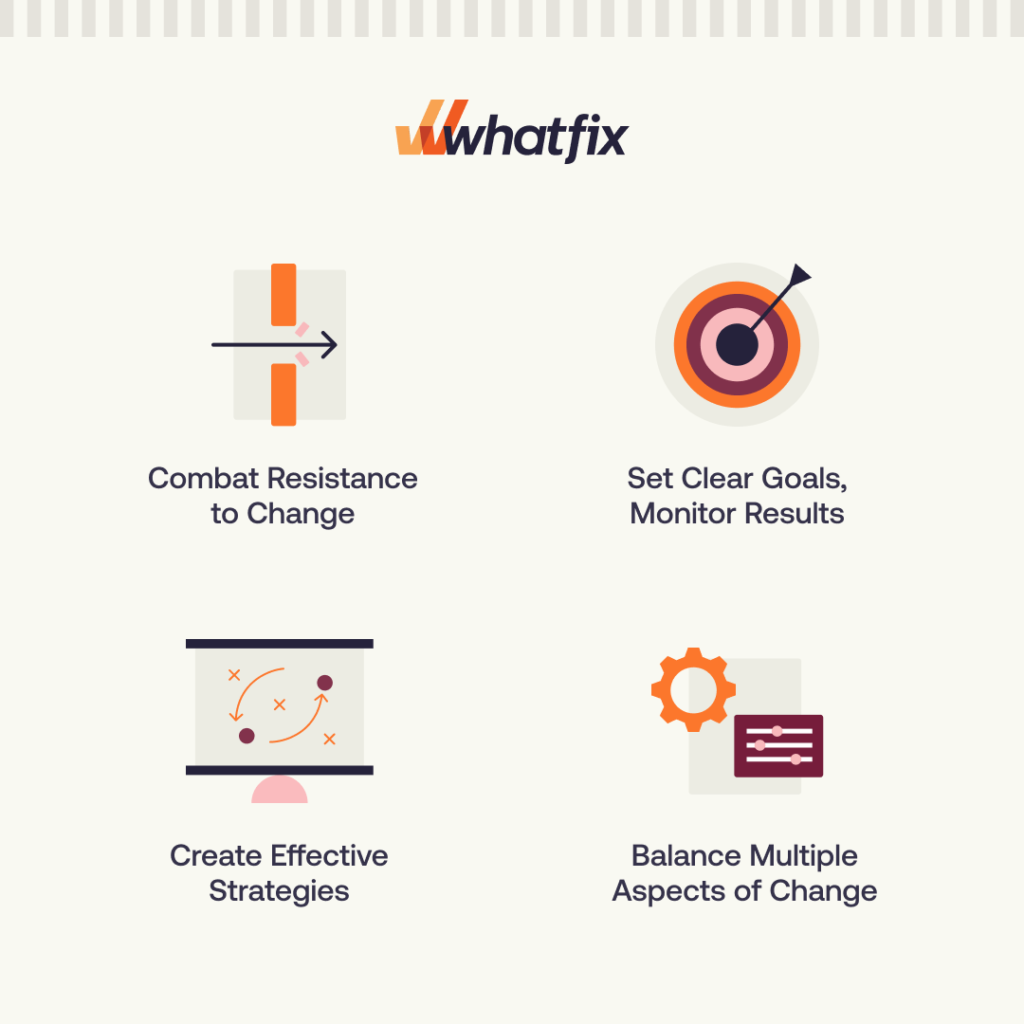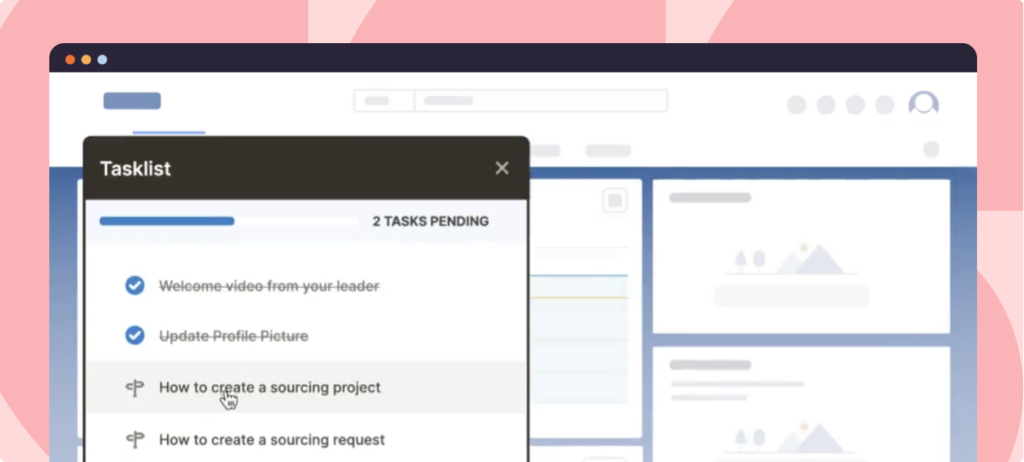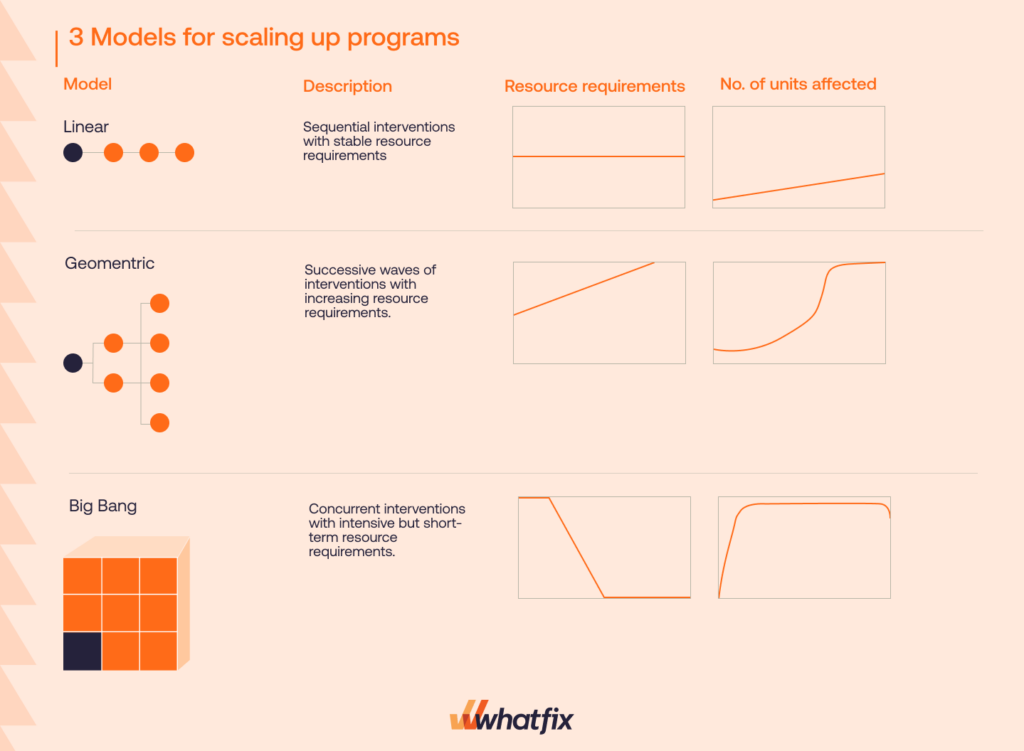Why Change Management Is More Important in the Modern Workplace
Change has always been part of doing business. However, change is constant, complex, and high-stakes for modern organizations. Companies must manage more change today faster than ever, from digital transformation and software implementations to reorganizations and compliance mandates, to new technologies like AI.
Without a structured change management plan, even well-intentioned initiatives can stall. You can mandate change, but if you don’t support people through it, with clear communication, training, ongoing support, and feedback loops, you’re inviting confusion, resistance, and failure. And with most transformation efforts tied to significant time and financial investments, the cost of poor execution is steep.
Effective change management gives organizations control over the entire lifecycle of change, not just the kickoff, including:
- Communicating the “why” behind the change.
- Preparing employees for what’s coming.
- Guiding users through new systems or processes with training and support.
- Reinforcing desired behaviors over time.
- Monitoring user adoption and closing feedback loops.
Modern change management must go beyond static plans and training decks. It must support users in the flow of work, embedded in the tools they use daily. That’s where platforms like Whatfix help enterprises reduce friction by enabling in-app onboarding, guided process adoption, contextual self-help, and AI-powered knowledge access at scale.
Understanding the Different Types of Change
Understanding the type of change you’re navigating helps shape how you communicate, support, and enable it across the organization. Let’s break down common types of organizational change:
- Transformational Change: Large-scale initiatives that reshape the company’s structure, direction, or operations, such as mergers, acquisitions, reorgs, or digital transformation efforts.
- Adaptive or Incremental Change: Smaller, gradual adjustments to existing processes or tools, like upgrading legacy systems, refining workflows, or evolving internal policies. These changes are often less disruptive but still require support to drive adoption.
- Individual Change Management: Personal-level changes affect how individuals work, including learning new software, adapting to new team structures, or upskilling to meet evolving role requirements.
- Exceptional Change: Isolated events that impact an individual’s experience without overhauling their responsibilities, such as a legal name change, which may require new credentials or documentation but doesn’t alter job function.
- Pendulum Change: Sudden, often dramatic shifts from one extreme to another — for example, moving from a 100% in-office culture to a fully remote workforce or being acquired by a competitor. These shifts can create friction without a structured enablement plan.
- Paradigm Change: Deep-rooted shifts in mindset, culture, or values that redefine how work happens, such as moving from synchronous communication to a hybrid async model. These changes require more than just tools; they need reinforcement, coaching, and cultural buy-in.
In practice, these types of change frequently overlap. For instance, implementing a new HCM platform like Workday might involve a transformational reorganization, individual user onboarding, and a cultural shift in how teams engage with HR processes — all at once. Successful change management must be holistic, responsive, and embedded into daily workflows.
With Whatfix, enterprises can support every layer of change, from big-picture process overhauls to micro-moments of user confusion, with in-app guidance, contextual self-help, and embedded feedback loops that drive lasting adoption, minimize disruption, and help organizations achieve outcomes from change projects.
Benefits of Effective Change Management
Change management becomes the backbone of business agility, enabling organizations to adapt quickly without sacrificing performance, compliance, or user experience. A strong change management plan delivers tangible outcomes like:
- Faster User Onboarding: Structured change processes reduce the time it takes for employees to adopt new tools, workflows, or behaviors. With embedded user onboarding and in-app support, users can confidently embrace change from day one.
- Minimized Productivity Disruptions: Even small changes can derail daily work without proper guidance. Change management ensures smooth transitions and productive users, even while systems, policies, or roles evolve in the background.
- Higher ROI on Technology Investments: Organizations often invest millions in enterprise software, but without adoption, value realization stalls. Effective change management ensures that tools are used to their full potential, maximizing return on investment.
- Faster Time-to-Value for Strategic Initiatives: Change management accelerates the time it takes for transformation initiatives to deliver measurable impact — whether it’s a new CRM rollout, a revised go-to-market strategy, or a reorg.
- Improved Process Governance and Reduced Compliance Risk: Change often introduces new risks, especially in regulated industries like banking, financial services, insurance, and the public sector. A well-governed change management approach ensures processes are followed correctly, consistently, and in compliance with policies or regulations.
- Reduced Help Desk and IT Support Load: With in-app guidance and embedded help, employees can solve their own problems independently, reducing the volume of support tickets and freeing up IT and operations teams to focus on higher-impact work.
- More Effective Change Feedback Loops: Strong change programs create intentional opportunities for feedback and close the loop with action. This continuous learning cycle enables real-time course correction and improves change outcomes.

Why Change Initiatives Fail and How to Prevent It
Despite good intentions, most change initiatives don’t meet their goals. 70% of all transformation efforts fail, with the most commonly cited reason being people issues, not strategy or technology alone.
Here are the most common (yet preventable) reasons change projects so often fail, and how modern organizations can course-correct with the right strategy, tools, and user support.
1. Change Isn’t Tied to Business Outcomes
Many change initiatives are launched without a clear connection to measurable business goals. Momentum fades quickly if employees and leaders don’t understand why a change matters and what success looks like.
According to Prosci, change initiatives are six times more likely to succeed when tied to a strong, clearly articulated business case and executive sponsorship.
To overcome this, reinforce the “why” behind change. With Whatfix, change agents, product owners, and transformation leaders can utilize in-app messaging, onboarding Flows, and contextual walkthroughs that align tasks to business value to help ensure change drives business value.
2. Lack of Goals
Change management goals are specific objectives that define what an organization aims to achieve when guiding people through a change initiative. They serve as measurable benchmarks for adoption, engagement, and business impact, ensuring that transformation is delivered and sustained.
Unlike general project goals, which focus on scope, budget, and timelines, change management goals focus on the people side of change. They capture how quickly and effectively employees adopt new processes, tools, or systems, and whether that adoption translates into improved outcomes. Specific goals help change projects by:
- Providing clarity and alignment: Goals give leaders, sponsors, and teams a shared understanding of what success looks like.
- Enabling measurement of success: With defined goals, progress can be tracked against adoption metrics, resistance levels, or proficiency gains.
- Ensures accountability: Assigning goals to roles ensures executive sponsors, managers, and change leaders each own part of the adoption journey.
- Connects to business impact: Well-defined goals connect user adoption and behavioral change directly to ROI, whether that means productivity recovery, compliance, customer satisfaction, or cost savings.
Setting practical change management goals requires more than a generic statement of intent. To drive measurable adoption and ROI, goals must be structured, aligned, and trackable. Below is a step-by-step approach for change leaders, project sponsors, and HR/L&D teams.
- Align goals with business outcomes: Every change initiative exists to solve a business problem like streamlining a process, reducing costs, improving compliance, or boosting productivity. Begin by identifying the business objectives and ensuring your change goals directly support them.
- Establish a baseline and define success metrics: Before setting targets, measure the current state such as user adoption levels, employee satisfaction scores, or error rates. These baselines create a benchmark for improvement and make progress measurable
- Use the SMART framework or OKRs: Goals must be Specific, Measurable, Achievable, Relevant, and Time-bound (SMART). Alternatively, align them to Objectives and Key Results (OKRs) for broader organizational tracking. Example of a SMART goal: “Train 100% of impacted employees on the new ERP system within 3 months, with 80% scoring at least 85% on post-training assessments.”
- Assign ownership and accountability: Assign each goal to a responsible owner like an executive sponsor, change lead, HR/L&D manager, or application owner. Clear ownership ensures accountability and drives execution.
- Review and adjust continuously: Change is not static. Establish a cadence (monthly or quarterly) to review progress, identify barriers, and refine goals. This ensures goals remain aligned with both business outcomes and employee needs.
3. Poor or Non-Existent Rollout Communication
Vague change announcements, confusing timelines, and one-size-fits-all change communication messaging are common culprits. Employees who don’t understand what’s changing, when, or how it affects them personally are more likely to resist change or disengage entirely
To overcome this, early in the process, involve those most affected, including all end-users. Collect feedback to help shape a user-first approach to your change development and rollout. With Whatfix, change leaders can create Pop-Ups and Task Lists to deliver targeted, timely communication (alongside additional user training) within the applications and workflows users already work in, ultimately reducing confusion and improving transparency.
4. Low Level of Buy-In and Internal Resistance
Change doesn’t happen in spreadsheets or strategy decks — it happens (or doesn’t) in the minds and workflows of your employees. And when stakeholders aren’t brought along early, change feels imposed rather than embraced.
A lack of buy-in from executive leadership, mid-level managers, or frontline employees is one of the top reasons change initiatives fail. Without visible support from the top, middle management accountability, and end-user confidence, the change effort can stall before it starts.
Resistance can show up in many forms:
- Passive disengagement or reverting to old tools and processes.
- Negative sentiment in employee conversations.
- Delayed or avoided adoption of new applications or workflows.
- Undermining behavior from middle managers who weren’t consulted early.
This resistance is often emotional and rooted in fear of the unknown, lack of clarity about the benefits, or previous failed change attempts. It cannot be overcome through top-down mandates alone.
To overcome this, organizations must empower end-users during the change, not just before it happens. Whatfix empowers organizations to do just that.
Whatfix helps overcome resistance and build buy-in by empowering users during the change, not just before it. Here’s how:
- In-app communication and role-based training that is contextual to every end-user that keeping all stakeholders informed and aligned.
- Guided onboarding and Smart Tips embedded within workflows make the change feel less intimidating and more intuitive.
- In-app feedback collection tools give users a voice, signaling their experience and input matter.
- Engagement and usage analytics help change leaders identify resistance patterns early, whether it’s a drop in workflow usage, skipped onboarding steps, or user friction with specific processes.
By giving employees real-time support and leaders real-time visibility, Whatfix turns change into a two-way conversation, not a one-way announcement. That shift builds trust, eases fear, and creates a stronger foundation for overall adoption and value realization.
5. Lack of User Training and Support During the Change
Change fails when users are left to figure it out on their own. Traditional training methods, slide decks, manuals, one-off webinars, and even LMS modules, don’t stick or scale with a large number of users, all with different needs and roles. Without ongoing support, confusion turns into shadow processes or tool abandonment. Forrester research shows that user adoption is the #1 barrier to realizing ROI from digital initiatives.
To overcome this, organizations must invest in a digital adoption platform (DAP) like Whatfix DAP to enable users with continuous training and support via embedded workflow guidance, interactive walkthroughs, Self Help widgets, and AI-powered knowledge discovery, all directly inside their business applications.

6. Inability to Measure Change Impact and ROI
If you can’t track progress, how do you prove success? Many organizations fail to set change outcome KPIs, baseline benchmarks, or digital adoption target metrics, making it nearly impossible to iterate or validate value to leadership.
With a product analytics platform like Whatfix Product Analytics, change leaders and product owners can track out-of-the-box user actions and set up custom events to monitor. Benchmark KPIs like time-to-completion of mission-critical processes and analyze user engagement via Funnels and Journeys to identify areas of friction. Use those insights to improve your change strategy and overall project rollout to adopt an agile change optimization approach.
7. Disrupting Workflows and Risking Live Software Usage
Rolling out change without a safety net often pushes employees to improvise — or make mistakes in live environments. This creates risk, data quality issues, and operational friction, damaging trust in the new system.
Change leaders can prevent this by creating sandbox application environments for user training, complete with embedded guidance, before the go-live date. Leaders can then layer contextual tips and guardrails into production to keep users on track without disrupting their flow post-launch. With a tool like Whatfix Mirror, organizations can easily create replica sandbox applications for user testing and training without development resources.
By understanding — and proactively solving — these failure points, organizations can dramatically improve the success rate of change initiatives. With Whatfix, enterprise teams don’t just plan change — they operationalize it through embedded guidance, in-the-flow learning, real-time feedback, and user analytics that help every transformation stick.
Best Practices to Manage Change Effectively
Organizational change requires dedicated planning, resources, attention to detail, and a focus on end-user enablement to empower those most impacted by change to appropriately adapt and adopt new processes, tools, and systems.
Based on our experience, here are ten critical change management best practices to ensure an effective transition and implementation.
1. Establish well-defined change governance structures
According to McKinsey research, change initiatives built on programs with strong governance and well-defined roles and responsibilities are 6.4x more likely to be successful.
This starts by creating a change committee, often called a change advisory board (CAB), with executive leadership buy-in, c-suite collaboration, change management officer(s), cross-functional executive sponsors, and department/team owners.
This team will be involved in creating processes to vet and prioritize change projects, the governance processes to take them from concept to reality, and what change management models and frameworks work best for your enterprise. They’ll also be responsible for tracking progress, monitoring adoption, facilitating communication, and providing guidance to the rest of the organization when exploring larger-scale change initiatives.
2. Talk with end-users most impacted by the change to understand their contextual challenge
Transformational change projects should improve core business processes and drive business outcomes. While leaders may understand these more extensive operational needs and can prioritize what change projects are most critical to business success, you can’t correctly understand the challenge or need without talking to those most impacted.
A vital part of any change project is to talk to the front-line workers who the change will most impact. Understand their current challenges and where they need the most support. This will help you understand the landscape of your change initiative, how the status quo negatively impacts your operations, and how a new solution or change can positively impact your business and these front-line workers.
Having transparent, open conversations with these employees will also allow you to secure buy-in from those asked to make significant changes in their day-to-day tasks. This establishes transparent communication with these critical employees and allows you to tackle internal resistance before it takes root.
3. Determine a change rollout method
How will you implement your change? That will depend on the size of the change, how many people it will impact, the risk involved, your IT resources, and more.
There are three significant models for rolling out and scaling your change programs, each with benefits, limitations, and resource requirements. Those include:
- The Linear Release Method slowly rolls out to users gradually and sequentially. This allows for a stable release of a change project without risking large-scale end-user rollouts. Support teams aren’t stretched too thin and can monitor smaller groups of users at the start of a rollout to monitor any issue.
- The Geometric Wave Approach allows you to take a phased implementation when taking a change live. You release the change to similar-sized groups of end-users at specific intervals. This gives your support teams the flexibility to be manageable while learning how to support end-users properly. This also promotes an agile-approach to change rollout, as organizations can make adjustments for each new cohort that the change is rolled out to.
- The Big Bang Release is pushing a change to all end-users simultaneously. This requires many support resources at the beginning of the release but fades over time. It’s the most risky of all releases, as you’re moving all your end-users to a new system, process, or technology all at once, meaning if an incident happens, it could knock out your entire operations and services.

4. Communicate early and transparently through a multi-channel approach to change announcements
The sender of your change announcement and updates should be contextual to the type of change you’re rolling out. More prominent organizational change announcements require more planning and a holistic strategy, while smaller, departmental-based change communication should come from the key stakeholders in those business units.
According to a survey from Prosci, 58% of employees prefer to receive communications about the personal impacts of change directly from their supervisors, followed by department heads (11%); CEOs, Senior Managers, and HR leaders, all failing to reach 10%.
When it comes to learning about organizational change, employees prefer the CEO to send change announcements and communication (37%), followed by executive leaders (24%), senior managers (10%), and department heads (10%).
Whoever is your change communicator, communicate to your employees (and anyone impacted by the change rollout) early and often. For internal change projects, take a multi-channel approach to announcing the change and when providing updates. Examples of channels to communicate change-related updates to employees include:
- Slack channels.
- Pop-ups and in-app announcements that overlay your employees’ digital workplace.
- Email.
- At all-hands and department meetings.
5. Leverage your change influencers
Change doesn’t happen by force—it requires influences across your organization to evangelize the project and drive acceptance and excitement. A change agent can (and should) play many roles, including communicating change-related news, showcasing wins, discussing issues with end-users, and more.
According to Malcolm Galdwell’s The Tipping Point, there are a few different types of internal influencers:
- Mavens: Build skills, transfer knowledge, and share advice.
- Connectors: Strong interpersonal communication skills and well-connected and liked throughout the organization.
- Salespeople: Can easily persuade others.
- Leaders: Senior leadership that employees look to follow who have earned trust.
6. Utilize Proven Change Management Models to Accelerate Implementation
There is no one-size-fits-all change approach. Organizations must rely on established change management models and proven frameworks to provide structure, guide decision-making, and improve the likelihood of successful change implementation.
Each model is designed with different change scenarios in mind, whether you’re leading a cultural shift, implementing a new enterprise technology, going through organizational restructuring, or supporting individuals through transitionary periods.
Below is a comparative table of the most widely utilized change management models, along with a quick overview and ideal use cases for each:
| Model | Overview | Best Used For |
| Lewin’s Change Management Model | A three-stage model: Unfreeze → Change → Refreeze. Emphasizes preparing the organization before change, managing the transition, and solidifying the new state. | Simple, linear changes like new policy implementation or minor system rollouts. |
| McKinsey 7-S Model | Focuses on aligning seven elements (Strategy, Structure, Systems, Shared Values, Skills, Style, and Staff) to ensure holistic change. | Complex organizational change that requires cross-functional alignment, such as a digital transformation or company reorg. |
| Nudge Theory | Based on behavioral economics; encourages subtle, positive reinforcement to influence behavior change. | Situational or cultural changes where resistance is high and employee behavior must evolve organically — e.g., compliance adoption or sustainability initiatives. |
| ADKAR Model | A people-centered model focused on five key outcomes: Awareness, Desire, Knowledge, Ability, and Reinforcement. | Individual-level adoption of tools or processes — ideal for software implementations, new workflow rollouts, or training initiatives. |
| Kübler-Ross Change Curve | Based on the five stages of grief: Denial → Anger → Bargaining → Depression → Acceptance. Helps manage emotional response to change. | Highly disruptive changes, such as layoffs, restructuring, or leadership changes where emotional support is critical. |
| Bridges’ Transition Model | Focuses on people’s psychological transitions during change: Ending → Neutral Zone → New Beginning. | Changes that require profound mindset shifts, such as culture change, brand repositioning, or mission shifts. |
| Satir Change Model | Emphasizes performance dips during change: Late Status Quo → Resistance → Chaos → Integration → New Status Quo. | Team-level or departmental change where productivity temporarily drops, such as adopting a new sales methodology or CRM. |
| Kotter’s 8-Step Change Model | A structured, top-down model for leading change, with steps including creating urgency, building coalitions, and anchoring change. | Large-scale, enterprise-wide changes that require executive leadership and organization-wide communication. |
| Maurer’s 3 Levels of Resistance and Change Model | Identifies three types of resistance (I don’t get it, I don’t like it, I don’t like you) and strategies to overcome each. | Use when facing stakeholder resistance — ideal for projects with political, relational, or emotional pushback. |
| Deming Cycle (PDCA) | A continuous improvement model: Plan → Do → Check → Act. Focuses on iterative change and learning. | Ongoing process optimization and task improvement projects like Agile retrospectives, A/B testing, or operational efficiency changes. |
7. Invest in Tools to Manage End-to-End Change Rollouts
Change is no longer a once-a-year initiative; it’s an ongoing, enterprise-wide activity that requires an agile approach. That’s why organizations need more than a playbook. They need a change management tech stack that supports transformation from planning to execution to full digital adoption.
The right change management tools help enterprise change leaders take a structured, data-driven approach across every phase of a change initiative. Here’s how they fit into the broader rollout lifecycle:
1. Assessment & Readiness
Before change begins, organizations must assess the current state. Assessment tools help teams:
- Identify impacted teams, systems, and workflows
- Gauge change readiness and cultural risk
- Map out stakeholder influence and resistance levels
Examples of change assessment and readiness tools include survey-based platforms, heatmaps, and change impact analyses.
2. Planning & Strategy Development
A strong plan turns insight into action. Planning tools provide solutions like:
- Structured frameworks like ADKAR, Kotter, or PDCA.
- Timeline builders and change roadmaps.
- Governance models and approval workflows.
Examples of planning and strategy development tools include project management platforms with change-specific templates, or user adoption planning dashboards.
3. Execution & Implementation
Once live, execution-based change tools keep projects on track. Implementation tools allow you to:
- Track project milestones and owner accountability
- Push out real-time updates and alerts
- Coordinate rollout timelines across departments
This includes DAPs like Whatfix, task management software, CRM-integrated rollout trackers
4. Communication & Engagement
Without clear, consistent messaging, even the best change plans will fail. Communication tools help:
- Deliver role-based announcements
- Reinforce change initiatives across channels (email, chat, in-app)
- Keep stakeholders informed and aligned
Examples of this include Whatfix DAP for creating in-app communication like Pop-Ups and interactive guidance like Flows, as well as collaboration tools like Slack or MS Teams
5. Training, Adoption & Support
This is where change either sticks or slips. Training and enablement tools ensure:
- Employees know how to use new systems and why change is happening
- Guidance is available in the moment of need, not just in training sessions
- Adoption is tracked and continuously improved
With a platform like Whatfix, leaders can take a user-centric approach to change. With in-app guidance, AI-powered Self Help, contextual task automation, and just-in-time user support, change leaders can enable users throughout the change transition, ensuring no loss in productivity and fast time-to-value.
Investing in the right combination of these tools, especially a digital adoption partner that connects strategy to execution, gives organizations the operational muscle to execute change efficiently and accelerate transformation.
8. Enable end-user employees with guidance and support in the flow of work
Organizations must navigate change and train employees on how to use new systems and processes without impacting employee productivity and output. This can be a significant roadblock for organizations unable to trade off output for process improvements.
By following the 70-20-10 rule of learning, IT and change teams can balance training employees on new software in the flow of work without disrupting day-to-day operations.
The 70-20-10 rule says that 70% of learning and skill acquisition comes from types of training with experiential learning and hands-on training. With Whatfix, organizations can create replica sandbox environments of their enterprise applications to provide live, interactive end-user training without risking live software usage.

With Whatfix DAP, employees are enabled to flow their work with in-app guidance and performance support like product tours, interactive walkthroughs, in-app tutorials, tooltips, task lists, and more.

9. Monitor progress, track end-user adoption, and be agile
Change advisory boards must plan change projects and own the rollout. They’re also tasked with monitoring the progress of change initiatives and tracking adoption and success metrics.
First, tie your change initiatives to more significant business metrics and outcomes. Then, create individual program-level metrics to monitor progress and success. Studies have found that setting and monitoring change KPIs leads to change initiatives succeeding at a 7.3x higher rate.
Change committees should monitor and track the following change-related metrics and progress indicators:
- Change milestones, budgets, and timelines.
- Operational performance metrics like wait and cycle times.
- Organizational health metrics, governance practices, and behavioral shifts can be tracked through end-user analytics, user surveys, one-on-one conversations, and team meetings.
- End-user adoption to ensure that new processes and applications are not only being used by employees (or customers) but that they’re being used correctly and efficiently, without friction.
- Key business outcomes intended by the change, including performance improvements (time-to-completion, improved revenue, reduced risk, deflect issues) and ensuring the change didn’t cause unintended consequences.
- New value created across the organization, like freeing up employee time to focus on more critical tasks, creating better customer experiences, etc.
Use these insights to take a data-driven, agile approach to your change initiatives. If things aren’t working as intended, take action and make changes. Change projects can quickly go off track, and change boards and leaders are there to keep projects aligned with goals and help remedy any issues.
10. Showcase early wins and productivity improvements in multiple channels
When monitoring change adoption, keep an eye out for early adopters. Track their productivity improvements and showcase how they’re accomplishing goals and driving business outcomes with the new software to help overcome internal resistance to change from other team members.
Showcasing how the change has positively impacted colleagues is an effective strategy for encouraging employees who show signs of being slow to adapt.
Use multiple channels to showcase early change wins, including all-hands meetings, Slack, and email threads.
11. Collect employee feedback before, during, and after the change project
Change feedback refers to collecting and analyzing end-user feedback related to change initiatives from those directly impacted by the change. Feedback loops enable organizations to improve the transition, migration, and application implementation processes, and ensure that changes achieve the desired business outcomes.
By collecting end-user feedback on change projects, organizations can:
- Identify issues early in change projects.
- Overcome resistance to change and address causes of change fatigue.
- Improve decision-making by including feedback from those most impacted by change.
- Build trust with end-users by clearly communication the “why” behind change projects.
With Whatfix, collect end-user feedback at critical moments in your change project, like during user testing, end-user training, and post-implementation.

12. Promote a culture that embraces change
Well-documented processes and handover procedures. Highly skilled employees with strong knowledge repositories that are easily accessible, contextual, and updated. Create feedback loops with employees to make change project charters to present to their department leaders or your change committee. Take a multi-channel end-user support approach to enable employees with IT-related resources that work to deflect issues and drive employee performance with contextual in-app help in the flow of work.
Change Management Clicks Better With Whatfix
Traditional change management focuses on process. Whatfix focuses on people and how they experience change inside the tools they use every day.
Whether rolling out a new enterprise application, shifting internal processes, or driving digital transformation, Whatfix helps you remove user friction, reinforce change in real time, and achieve full adoption faster.
We do this by targeting every critical friction point across the change rollout lifecycle and application adoption journey:
- Change rollout & communication: Change announcements and awareness campaigns via in-app Pop-Ups. Role-based messaging for targeted internal alignment. Feedback collection and sentiment analysis through embedded surveys.
- Pre-rollout and user training: User acceptance testing (UAT) support with task flows and behavioral tracking. In-app user onboarding from day one with interactive walkthroughs, task lists, and integrated knowledge centers. Auto-translation and multilingual support for global teams.
- Post-live user enablement and support: Embedded workflow support for real-time, step-by-step guidance. Contextual Smart Tips are triggered by user action, page location, or task. AI-powered Self Help for instant, conversational assistance.
- Post-implementation optimization: Process compliance and governance with guardrails and just-in-time prompts. Advanced feature discovery and adoption nudges. Task optimization insights through behavior analytics and segmentation.
Why Do Leading Enterprises Choose Whatfix?
Over 750 organizations, from Fortune 500s to growth SaaS startups, choose Whatfix as their digital adoption platform partner. Here’s why customers consistently select Whatfix over the competition:
- Adaptive AI: We tailor the user experience by role, workflow stage, and past behavior — dynamically personalizing guidance to boost performance and reduce frustration.
- Any Platform, Any Device: Whether internal or customer-facing, cloud or desktop, web or mobile — Whatfix works across your entire application ecosystem.
- AI-Powered Enablement: AI Self Help acts as a smart copilot that surfaces answers instantly based on user behavior, location, and documentation source.
- Truly Vendor-Agnostic: Whatfix is the world’s largest pure-play Digital Adoption Platform, built to support any enterprise software — not just one ecosystem. Unlike closed-suite DAP vendors owned by ERP providers, Whatfix supports Salesforce, Oracle, Workday, SAP, Microsoft, and every other business-critical tool in your stack.
- Unmatched Customer Success: Get access to a full-service enablement team — including onboarding specialists, content creators, a Center of Excellence, and 24/5 support.




